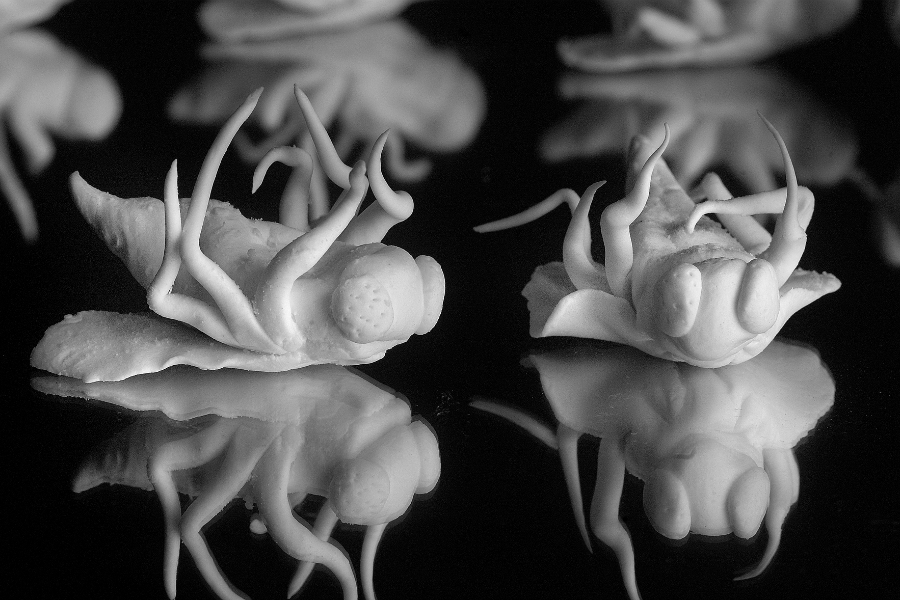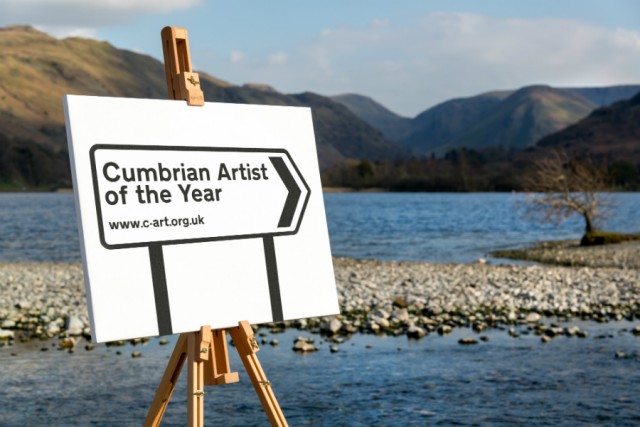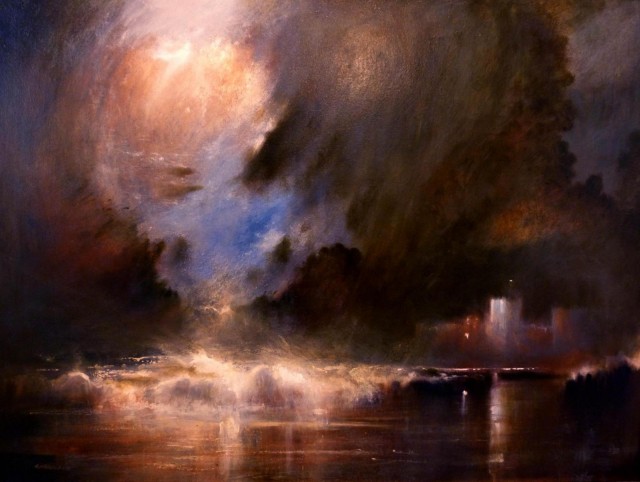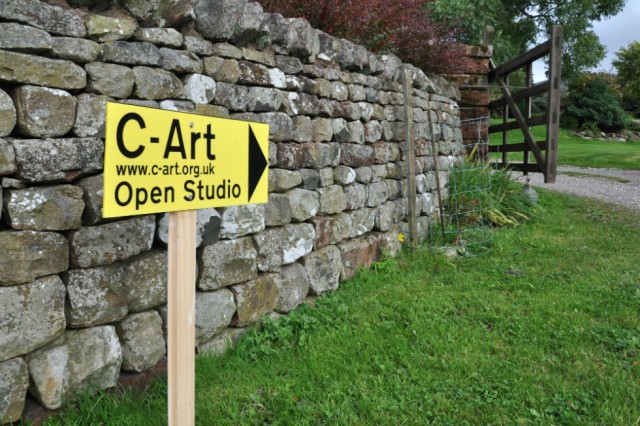Art In Extraordinary Cumbrian Places: C-Art 2015

Amy Thomas visits the festival unifying artists all over the Cumbrian countryside — to sell art, meet tourists and showcase an extraordinary landscape…
For two weeks this September, Cumbria is opening its doors — quite literally. Visitors are being welcomed into living rooms, barns, churches and home studios for C-Art 2015: Cumbria’s largest visual arts festival and open studio trail. Asking us to explore the Cumbrian visual arts network at large, to buy art, explore the landscape and to meet artists in person, C-Art is an attempt to showcase, unify and support artistic practice throughout this beautiful (and for its residents, at times remote) region.
Including over 110 individual artists, designers and independent galleries, C-Art is grouped into five different areas of Cumbria, making it easy to plan a route around the circuit according to personal interest. Established in 2011 by Eden Arts – who are interested in projects of mass participation and digital engagement – C-Art had over 32,000 studio and exhibition visits last year alone, and processed over £144,000 in art sales.
Intrigued in particular by this year’s addition of ‘C-Art in Extraordinary places’ (new work in response to unusual locations) I decided to take a day trip to Carlisle on the opening day of the festival. First on my list was Carlisle Cathedral, to see Death and Life: a large work by artist Christine Hurford that stretches across the entire length of the central nave. At first glance, the mirror-topped platforms covered with white ornaments appear to be existing memorials: the lustrous materials used imitate those of the cathedral, blurring the margins of the artwork which flow into the sacred setting.
Hundreds of bone china flies lay across mirrors, as if fallen straight from the sky; used as a motif to represent the fragility of time and space. Viewed in these mirrors, the insects once again regain a vitality, made precious by the magnificent sanctuary of the building. The enchanting atmosphere prompts a reflective mood, and eloquently attests to the sensitive topic of life and death running through the work.
I’d urge you to look around the 900 year old site of the cathedral and compare it to Hurford’s installation; as the resonance of the past becomes increasingly vivid in this unusual blend of contemporary art, religion and history.

After leaving the cathedral, Prism Arts Centre is just a short walk away, adjacent to Tuille House Museum and Art Gallery. An arts organisation which runs courses specialising in participatory and inclusive arts, Prism Arts provides a much-needed outreach for the wider Cumbrian community. The exhibition celebrates this ethos, and offers the opportunity to see the diverse ways in which artists explore colour and landscape; which are clearly at the heart of this making.
There is also the chance to see Skyground: an audio-visual, collaborative installation from Prism Arts artists and the local community in response to the work of Anselm Kiefer. This interactive sound work engages due to the fine balance between sight and sound, which continually shift between being peaceful and erratic, making the work appear as a live painting.
In the adjoining University of Cumbria building, you’ll find a small number of MA students who are also exhibiting during C-Arts. At the Still Point of the Turning World by Ruth Egglestone caught my attention: commenting as it does on fragmented ‘in-between’ places. I spent a long time contemplating four framed photographs which allude to a sense of being trapped in two places at once. Rather haunting in their foggy haze, the series of very light, greyscale landscapes evoke an irretrievable and dissolving countryside scene. The blurred quality of the images mystify the point of focus, making the viewer long to decipher the full scene. This conjures up sensations of memory, and speaks of the ephemerality and fragility bound to our experience of the rural landscape.

Outside the gallery spaces, the distinct countryside demands attention; perhaps one of the unique pleasures of the C-Arts project. Skirting the city on my next visit to an artist’s open studio, based at his home in the suburbs of Carlisle, the walk led me to a wide stone bridge leading over the River Eden; revealing the rolling countryside and distant hills which inspires so many artistic interpretations. I walked through Rickerby Park following the riverbank path, and continued down towards Brampton through a residential area, until noticing the yellow sign which guides visitors into the exhibition space.
Robin Oliver is one of many participating artists who have opened up their home to visitors during the festival, offering a more personal insight to the environment where the artist lives and works. Oliver has several framed prints, photographs, and ‘works in progress’ hung in the reception rooms and hallway of his house. Viewing art in such an alternative way, and not in a gallery context, adds a spontaneity to this festival, where artists have been granted the freedom to curate their own pop-up gallery, with the bonus of a festival-sized audience.
This casual setting also offers visitors a chance to meet the artists; enjoying a long chat with Oliver in his ‘garden room studio’, I was able to find out more about his practice, and how he responds to the rural setting that he knows so well. Oliver’s detailed observations are clearly a result of his passion to record the quiet magnificence of the natural world.
Back in Carlisle city centre, I stopped off at the architectural offices of Malcom Wilson, based amongst the bustling bars of Devonshire Street. Wilson has combined his career as an architect with a career as a very successful landscape painter. The strong connection the artist has to Cumbria is powerfully portrayed in large oil paintings. The Air series – depicting stormy skies and cloud studies — particularly stand out as they capture rich details, creating the overwhelming feeling of looking out to the distance beyond the painting. The striking drama of Wilson’s works recall early landscape painters, and are a reminder of how the specific character of the English countryside inspires and unites centuries of artists.

Carlisle and the wider Cumbrian region is a growing as a cultural hub. Alongside other new ventures — such as the recently opened Old Fire Station, offering an exciting and varied line up of arts events — C-Arts is a great chance to engage in an arts scene which is rapidly developing. This year’s festival has been extremely well produced and organised, and the accompanying C-Art catalogue is a useful way to plan a day out encountering all that the festival – and Cumbria — has to offer.
As a note, I travelled by train direct from Manchester City Centre, but I would advise taking a car wherever possible to make the most of your day trip; especially in visiting some of the more remote studios, workshops and homes in extraordinary places.
Amy Thomas
See the C-Art trail all over Cumbria until Sunday 27 September 2015; for a full list of participating artists and venues click here, or download the C-Art catalogue here
Images, from top: Death and Life (installation shot), Christine Hurford, Carlisle Cathedral; the Cumbrian Artist of the Year 2015 award was won by Sarah Tew — see her work at the Merz Barn; Malcolm Wilson, Carlisle city centre; C-Art 2015. All images courtesy the artists and C-Art
Read A Green And Pleasant Land? Rural Reality Questioned At The Harris
This article has been commissioned by the Contemporary Visual Arts Network North West (CVAN NW), as part of a regional critical writing development programme funded by Arts Council England — see more here #writecritical






